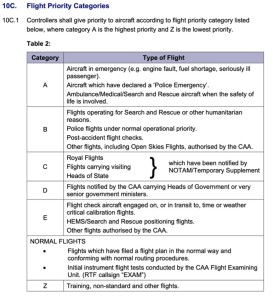The Charity
Aviation
Maritime
ATC829
Initial Report
I have worked at [Airfield] for some time. We sit very close to some busy airspace and do not have an ATZ. During my time here it has been noted that there is a particular A/G operator who likes to ‘control’ aircraft on the ground or in the air. This is especially evident when emergency service aircraft call with priority call signs, whereby this individual will hold aircraft around the airfield, but also fairly regularly call aircraft to go-around or perform non-standard turns in order to try and fit in departure of the helicopter.
There have been multiple occasions where this has happened but very recently a solo student was told to go around and make an early right turn, something which myself and my colleagues feel is inappropriate and potentially hazardous. Over the years we have spoken to the operations team and the individual to indicate our willingness to arrange our own flight path around the traffic at the time, but this always seems to fall on deaf ears as the problem persists. Only yesterday, he was strongly suggesting an aircraft depart from the intersection when the pilot had requested a full backtrack. Lucky the pilot responded that it was captain’s discretion to use the full length of the runway, and not a solo student who may have taken this advice with unknown consequences.
Airfield Operator’s Comment
I am aware that we have had reports that one of the A/G operators is giving instructions to pilots. As a result the team have been reminded that they should be giving information only.
CAP493 Section 1 Ch 4 Para 10C Table 10C.1
Although ATCOs have defined priorities for handling aircraft in controlled airspace (see CAP493 Section 1 Ch 4 Para 10C), these priorities do not extend to Class G airspace and the associated requirements for giving way.

CHIRP Comment
The temptation for A/G operators to want to choreograph movements at busy airfields is understandable but this must be resisted because A/G operators may not be aware of the full context of the operation or may not have the competencies to assess the situation and make associated decisions. The main documents that outline the roles of FISOs and A/G operators are CAP774 (UK FIS) and CAP452 (Aeronautical Radio Station Operator’s Guide) Chapter 4 (and its recent supplementary amendment update to requirements for Radio Operators Certificate of Competence (ROCC)). For avoidance of doubt, Section 6 of the Skyway Code states that:
Air/Ground (A/G) radio is the most basic form of radio ground station you will encounter at an aerodrome. Depending on the individual station, the operator of an air/ground radio may provide traffic and weather information to pilots operating on and in the vicinity of the aerodrome. Such traffic information is based primarily on reports made by other pilots. While information provided by the radio operator may be used to assist a pilot in making a decision, the safe conduct of the flight remains the pilot’s responsibility.
The radio operator has no power to issue clearances or instruct aircraft either in the air or on the ground. In the A/G radio environment you must not request a “clearance” to do anything, nor will you receive one.
The callsign is the name of the location followed by the suffix “Radio”. When operating in the A/G environment, the basic principle is that aircraft announce their position and separate themselves from other aircraft in accordance with the Rules of the Air and any published aerodrome procedures. Only carry out a manoeuvre (such as taxiing, take-off or landing) if you are satisfied if it is safe to do so and will not conflict with other traffic.
Pilots need to be clear in understanding what they can expect from the service provider they are talking to at the time, be they an Air Traffic Control Officer (ATCO), AFISO or A/G Operator. CHIRP is heartened that the Airfield Operator has reminded their team of the limitations of their service but there remains confusion in some minds as to prioritisation of emergency service aircraft. Although ATCOs have defined priorities for handling such aircraft in controlled airspace (see CAP493 Section 1 Ch 4 Para 10C), these priorities do not extend to Class G airspace and its associated requirements for giving way. Although A/G Operators can provide information about emergency services aircraft they must not pass instructions – if an incident were to occur following any such instructions, Airfield Operators should understand that they may hold liability. Although it is best practice to give way to emergency services aircraft where possible (much the same as when driving and pulling onto the side of the road to allow an ambulance to pass), it is not a requirement per se and the emergency services aircraft itself must still abide by the rules of the air in respect to giving way. Finally, it is worth noting that PPL holders are not necessarily expected to know what the prefixes to emergency service aircraft callsigns mean. For information, the table shown outlines what is stated in CAP493 at the above link so if you hear an emergency services numeric callsign that ends in ‘Alpha’ then be aware that this means that it is carrying out an emergency/safety-of-life flight at the time.
Key Issues relating to this report
Dirty Dozen Human Factors
The following ‘Dirty Dozen’ Human Factors elements were a key part of the CHIRP discussions about this report and are intended to provide food for thought when considering aspects that might be pertinent in similar circumstances.
Pressure – desire to facilitate emergency services operations at the airfield.
Knowledge – understanding of the limitations of an A/G service.
Communication – inappropriate communication of instructions.
Deviation – issuing instructions counter to the permitted level of service.
This data type is not supported! Please contact the author for help.